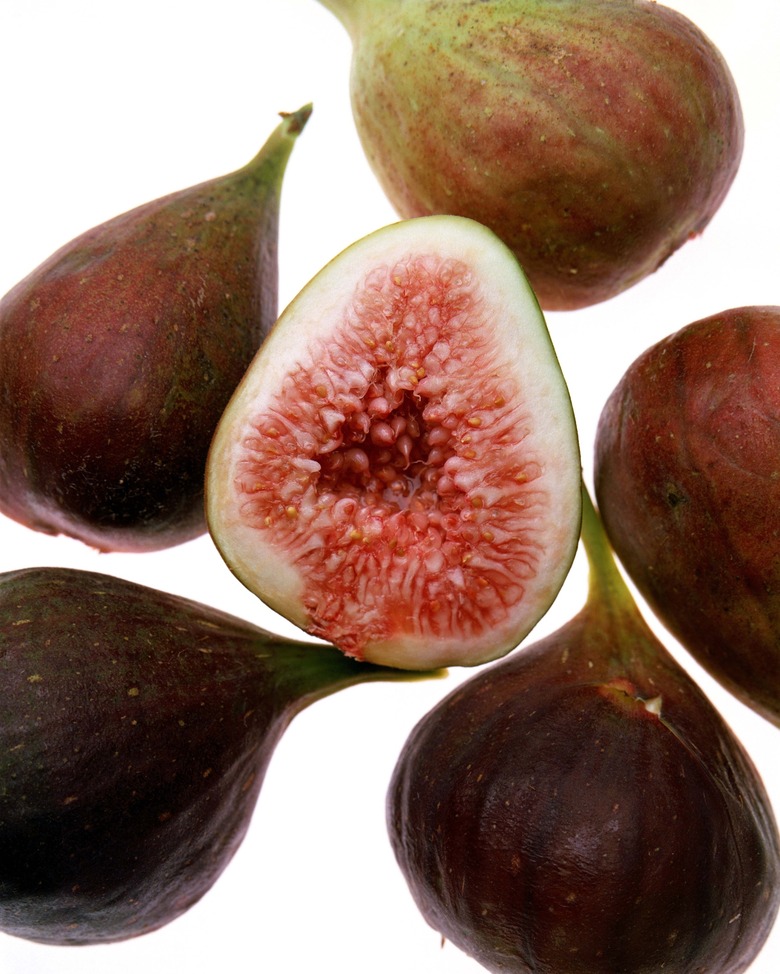What Is The Difference Between Figs & Plums?
Figs and plums are fruits with similar culinary properties but markedly different botanical lineages. Both fruits have a long cultural history beginning at least 2,000 years ago with ancient societies cultivating the trees for food. Eat figs and plums to increase your intake of dietary nutrients while enjoying the unique flavor and texture of each fruit.
Botanical Origins
Botanical Origins
The edible fig tree, Ficus carica, is closely related to a variety of rubbery, inedible tropical trees. The fig fruit itself is an unusual botanical specimen — an inverted flower covered by woody stem tissue. At maturity, the small, flower-like structures inside add to the unique flavor and texture of the fig.
The plum, in contrast, is closely related to other edible fruits of the genus Prunus, such as the nectarine and peach. These fruits have seeds encased in a hard stone or pit, surrounded by flesh and thin skin. While edible fig is availabe in only a few varieties, there are more than 2,000 types of plums, varying in color, size and flavor.
Region and Season
Region and Season
Fig trees grow well in Mediterranean and tropical climates, including California and South America. They are native to West Asia. Plum trees are more tolerant of a wide temperature range, depending on the specific variety. Wild and cultivated plums grow throughout the United States and Europe.
The harvest season for figs occurs in summer, beginning in June and continuing until September. Plums peak at different times, resulting in a long season spanning May through October.
Nutrition and Selection
Nutrition and Selection
Figs contain high amounts of fiber and the nutrients potassium and manganese. Plums are higher in vitamins C and A, and much lower in calories.
Choose fresh, ripe figs carefully, and store them in the refrigerator for up to two days. Plums are hardier, so you may purchase hard, unripe plums and ripen them at room temperature.
Culinary Uses
Culinary Uses
Both figs and plums are sweet fruits which may be eaten raw or cooked. Eat raw plums from the outside in, discarding the hard pit. Quarter or peel figs to eat the fleshy interior under the tough skin. Many recipes involve poaching or baking these fruits. Dried plums, or prunes, and dried figs are common snacks and dessert ingredients.
Cite This Article
MLA
MacIntosh, Mary. "What Is The Difference Between Figs & Plums?" sciencing.com, https://www.sciencing.com/difference-between-figs-plums-12038765/. 25 July 2018.
APA
MacIntosh, Mary. (2018, July 25). What Is The Difference Between Figs & Plums?. sciencing.com. Retrieved from https://www.sciencing.com/difference-between-figs-plums-12038765/
Chicago
MacIntosh, Mary. What Is The Difference Between Figs & Plums? last modified March 24, 2022. https://www.sciencing.com/difference-between-figs-plums-12038765/
